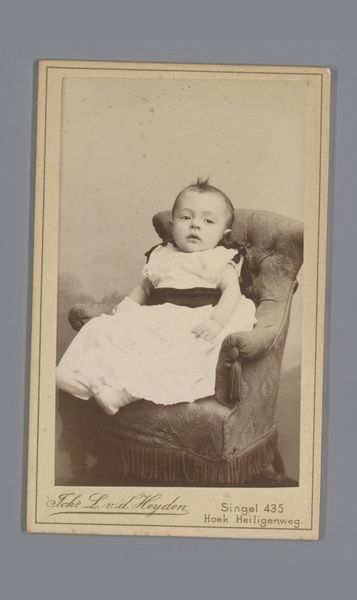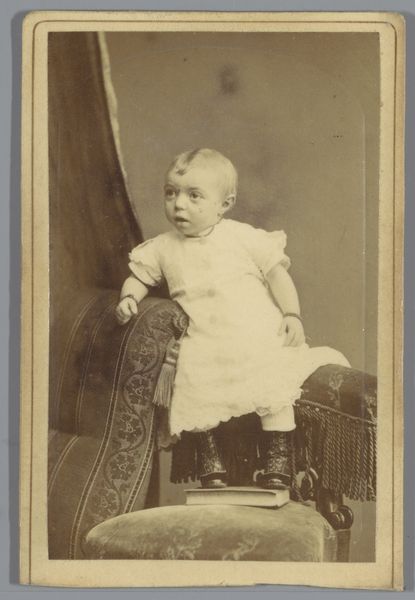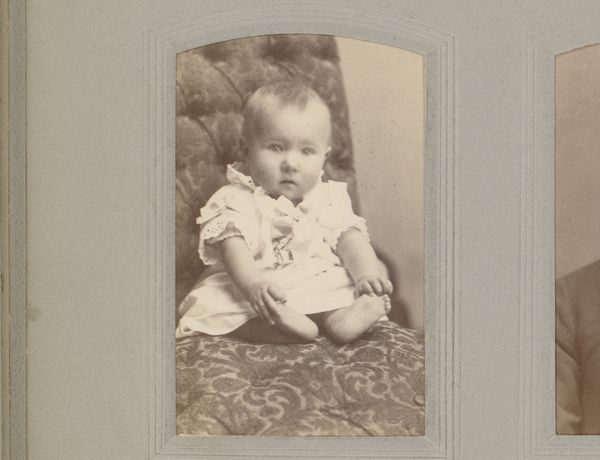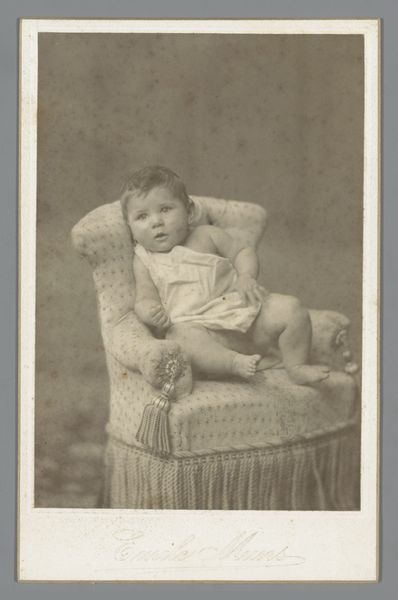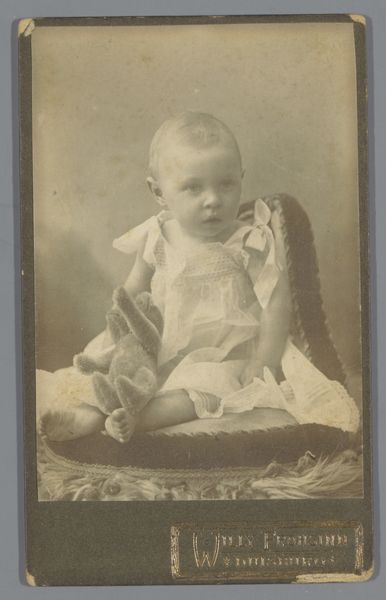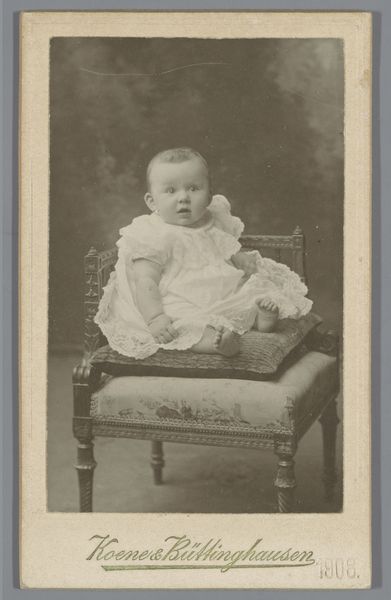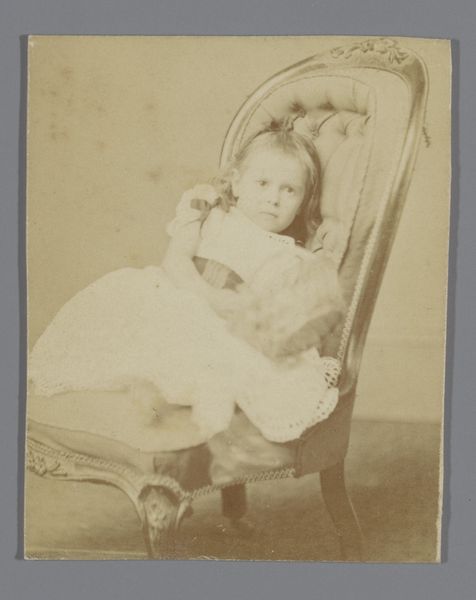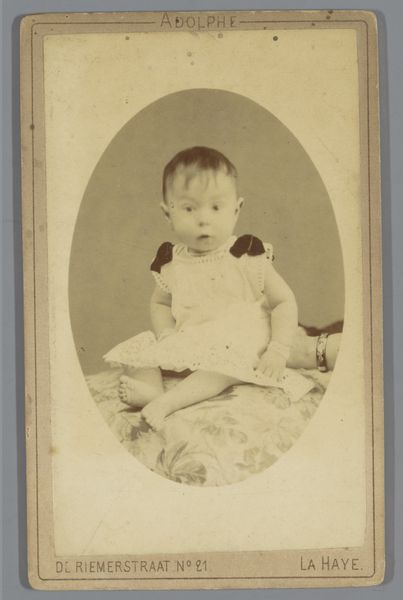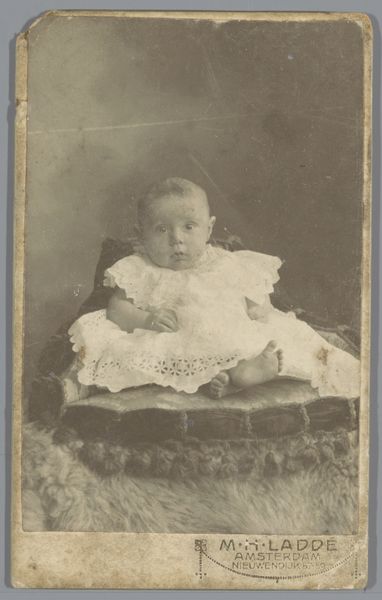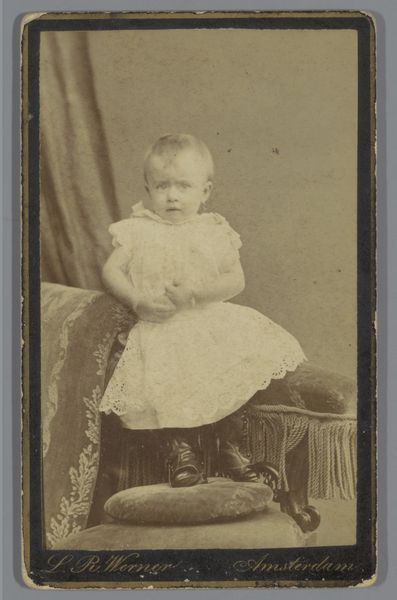
Dimensions: height 103 mm, width 63 mm
Copyright: Rijks Museum: Open Domain
Curator: Here we have an albumen print titled "Portret van een onbekend kind in stoel," dating roughly between 1886 and 1913. The photographer, Adolphe Zimmermans, captured this portrait for his studio in La Haye, Netherlands. Editor: The first thing that strikes me is how deliberately posed the child is, and yet, the effect is strangely disarming. There's an inherent vulnerability despite the formal setting, like a puppet placed on a stage. Curator: That's a keen observation. These studio portraits of children often reflect the parents' aspirations, projecting respectability. Consider the child's placement within a luxurious armchair that doesn’t seem fitting to its scale. But such respectability could sometimes conflict with the reality of lived experience, given that child mortality rates remained shockingly high in the era. Editor: Right, that chair becomes symbolic – an oversized throne, almost, but the child's bare feet bring everything down to earth. There’s this interplay between innocence and manufactured presentation, between a staged symbol of social aspiration and the raw physicality of an infant. The gaze meets us directly but the child is really seeing...what? Curator: What indeed. The image certainly draws out societal tensions between performance and authentic selfhood. It presents us with an innocent child who perhaps is also burdened by expectations it doesn't fully comprehend, yet cannot escape, either. Editor: I’m wondering about Zimmermans’ artistic intentions, too. There is something of the Pre-Raphaelites or Aestheticism in this image—not in its technique but in its ethos. A fascination with artifice, or capturing something eternal within something temporal...that is perhaps beyond a portrait. It evokes an odd mixture of melancholy and naive expectation of some undefined future. Curator: Ultimately, this portrait opens up dialogues about identity, the representation of childhood, and the performance of class in the late 19th century. The material elements, from the albumen print to the ornate armchair, tell their own story about societal anxieties and aspirations. Editor: And how, even in capturing a single child, Zimmermans inadvertently constructed a tableau of timeless visual paradoxes which linger for us even now.
Comments
No comments
Be the first to comment and join the conversation on the ultimate creative platform.
